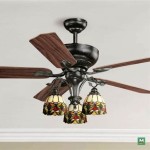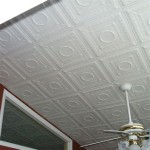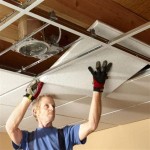How To Hang A Swing From The Ceiling: A Comprehensive Guide
Hanging a swing from the ceiling can transform a room into a relaxing haven or a playful space. Whether you envision a cozy reading nook with a gentle sway or a stimulating sensory experience for a child, proper installation is paramount for safety and longevity. This guide provides a detailed, step-by-step process for successfully hanging a swing from the ceiling, ensuring a secure and enjoyable experience.
Assess the Ceiling Structure
Before initiating any installation, a thorough assessment of the ceiling structure is crucial. The primary objective is to identify a suitable support point capable of bearing the intended weight. Common ceiling structures include wooden joists, concrete slabs, and metal beams. Each requires a specific approach and hardware.
For wooden joists, use a stud finder to precisely locate the joists behind the drywall or plaster. Mark the center of the joist, as this is the strongest point. Ensure the joist is substantial enough to support the swing's weight. A standard 2x6 inch joist is typically sufficient for lighter swings, but for heavier individuals or multiple users, a larger joist or reinforcement may be necessary.
Concrete ceilings require specialized anchors designed for concrete. These anchors expand within the drilled hole, providing a secure grip. The weight capacity of the anchor should significantly exceed the expected load. It is recommended to consult with a structural engineer or a hardware professional for guidance on selecting the appropriate concrete anchor for the specific swing and weight requirements.
Metal beams offer a robust support option. However, welding or drilling into a structural beam may compromise its integrity and is generally not recommended without professional consultation. Instead, consider using beam clamps that grip the beam without causing permanent alterations. Ensure the beam clamp is rated for the intended weight and is compatible with the beam's dimensions.
In any case, if there is any doubt regarding the structural integrity or weight-bearing capacity of the ceiling, consult a qualified structural engineer or contractor. They can assess the ceiling and provide recommendations for safe and effective swing installation.
Gather Necessary Materials and Tools
Having the right tools and materials readily available streamlines the installation process and enhances safety. The specific items required will vary depending on the ceiling type and swing design, but the following list provides a comprehensive overview:
*
Stud Finder:
Essential for locating wooden joists behind drywall or plaster.*
Drill:
A power drill is necessary for creating pilot holes or drilling through concrete.*
Drill Bits:
Select drill bits appropriate for the ceiling material. For wood, use wood drill bits. For concrete, use masonry drill bits.*
Screws or Anchors:
Choose screws or anchors rated for the intended weight and compatible with the ceiling material. Lag screws are commonly used for wood joists, while concrete anchors are essential for concrete ceilings.*
Swing Hangers:
These are specialized hardware designed to securely attach the swing to the ceiling. Ensure the swing hangers are rated for the intended weight and are compatible with the swing's suspension system.*
Chain or Rope:
Select chain or rope with a sufficient weight rating to support the swing and its occupant(s). Consider the length required to achieve the desired swing height.*
Measuring Tape:
Accurate measurements are crucial for proper swing placement and height adjustment.*
Level:
A level ensures the swing is hanging straight and prevents uneven wear on the suspension system.*
Pencil:
Used for marking the location of the mounting hardware.*
Safety Glasses:
Protects eyes from debris during drilling and installation.*
Gloves:
Provides a better grip and protects hands.*
Ladder or Step Stool:
Provides safe access to the ceiling.Selecting high-quality hardware is essential for safety and durability. Avoid using generic or untested hardware, as it may fail under stress. Prioritize products from reputable manufacturers that adhere to industry safety standards.
Installation Procedures Based on Ceiling Type
The specific installation procedure will vary depending on the ceiling type. The following provides detailed instructions for each common ceiling type:
Wooden Joists:
1.
Locate the Joist:
Use a stud finder to identify the center of a wooden joist. Mark the location with a pencil.2.
Drill a Pilot Hole:
Drill a pilot hole through the ceiling and partially into the joist. The pilot hole should be slightly smaller than the diameter of the lag screw.3.
Install the Swing Hanger:
Position the swing hanger over the pilot hole and insert the lag screws. Tighten the lag screws securely with a wrench, ensuring the swing hanger is flush against the ceiling.4.
Attach the Chain or Rope:
Connect the chain or rope to the swing hanger and to the swing itself. Ensure the connections are secure and properly fastened.5.
Test the Installation:
Carefully test the swing by applying weight gradually. Observe the swing hanger, screws, and connections for any signs of stress or movement. If any issues are detected, immediately discontinue use and re-evaluate the installation.Concrete Ceiling:
1.
Mark the Location:
Determine the desired location for the swing and mark the spot on the concrete ceiling.2.
Drill a Hole:
Using a masonry drill bit, drill a hole into the concrete ceiling according to the specifications of the chosen concrete anchor. Ensure the hole is deep enough to accommodate the anchor's full length.3.
Install the Concrete Anchor:
Insert the concrete anchor into the drilled hole. Follow the manufacturer's instructions for setting the anchor. This typically involves hammering or tightening a bolt to expand the anchor within the hole.4.
Attach the Swing Hanger:
Attach the swing hanger to the concrete anchor. Ensure the connection is secure and properly tightened.5.
Attach the Chain or Rope:
Connect the chain or rope to the swing hanger and to the swing itself. Ensure the connections are secure and properly fastened.6.
Test the Installation:
Carefully test the swing by applying weight gradually. Observe the swing hanger, anchor, and connections for any signs of stress or movement. If any issues are detected, immediately discontinue use and re-evaluate the installation.Metal Beam:
1.
Select a Beam Clamp:
Choose a beam clamp that is rated for the intended weight and is compatible with the beam's dimensions.2.
Install the Beam Clamp:
Attach the beam clamp to the metal beam according to the manufacturer's instructions. Ensure the clamp is securely fastened and cannot slip or rotate.3.
Attach the Swing Hanger:
Attach the swing hanger to the beam clamp. Ensure the connection is secure and properly tightened.4.
Attach the Chain or Rope:
Connect the chain or rope to the swing hanger and to the swing itself. Ensure the connections are secure and properly fastened.5.
Test the Installation:
Carefully test the swing by applying weight gradually. Observe the beam clamp, swing hanger, and connections for any signs of stress or movement. If any issues are detected, immediately discontinue use and re-evaluate the installation.Regardless of the ceiling type, regular inspections are crucial to maintaining safety. Check the hardware, connections, and swing suspension regularly for signs of wear, tear, or loosening. Replace worn or damaged components immediately. It is also advisable to re-tighten screws or anchors periodically to ensure they remain secure.
Ensuring adequate clearance around the swing is also vital for safety. The swing should have sufficient space to move freely without striking walls, furniture, or other objects. A minimum clearance of 3 feet around the swing is generally recommended.
By following these guidelines, one can safely and effectively install a swing from the ceiling, creating a relaxing and enjoyable space within their home.

How To Create Tons Of Fun Indoors By Building A Swing Inside

Everything You Need To Know About Hanging An Indoor Swing

How To Hang Chair From Ceiling

How To Hang A Hammock Chair From The Ceiling Erfly House

How To Hang A Hammock Chair From The Ceiling Erfly House

How To Hang A Porch Swing Step By

How To Hang An Indoor Swing Hanging Chair Installation Tips

How To Hang An Indoor Swing Hanging Chair Installation Tips

How To Hang A Porch Swing Pine And Poplar

How To Hang An Indoor Swing Hanging Chair Installation Tips
Related Posts








